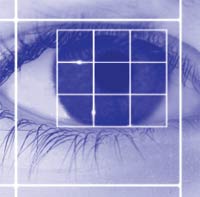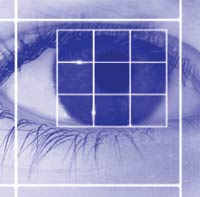
The Eyes Have It
Tips for understanding, choosing the best biometric solution
- By Robert Gailing
- Jan 01, 2009
 If the security market in 2009 is anything
like the one in 2008, it will be
brimming with technology to help
protect people, property and assets.
Thanks in part to the digital revolution,
end users can choose from a variety of
technical solutions ranging from basic
stand-alone video surveillance, alarm
intrusion or card access systems to comprehensive
and integrated enterprise-wide
IP-based systems.
If the security market in 2009 is anything
like the one in 2008, it will be
brimming with technology to help
protect people, property and assets.
Thanks in part to the digital revolution,
end users can choose from a variety of
technical solutions ranging from basic
stand-alone video surveillance, alarm
intrusion or card access systems to comprehensive
and integrated enterprise-wide
IP-based systems.
But because the security arena is such
a diverse field with almost infinite variables
and capabilities, the decisions as to
which solutions are the best have never
been more complex, and this is particularly
true in the newer field of biometrics.
The Best of the Best
Biometrics is the method for uniquely
recognizing and authenticating a person’s
identity, based on intrinsic physical traits.
While there are several biometric recognition
and authentication technologies
available, including fingerprint, voice,
hand and facial geometry, it is generally
acknowledged—and field-proven—that
iris recognition is the most accurate, stable
and scalable system on the market.
As an identity management solution,
iris recognition systems use a video camera
to take a picture of the unique pattern
of a person’s iris. Unlike other physical
characteristics, such as fingerprints, the
pattern of the iris does not change after
the first year of a person’s life. There also
are a number of additional features and
benefits that set iris recognition systems
apart from other biometric technologies.
Accuracy and Reliability
Iris recognition systems report a false
acceptance rate or false match of less
than one in 1.2 million for single-eye
recognition and one in 44 trillion when
both eyes are recognized. In other words,
the probability that an unauthorized person
will be accepted as someone else and
be allowed access is less than one in 1.2
million times. Accuracy also is ensured
when new enrollments are compared to
existing database enrollments to make
certain there is no duplication of templates.
One-to-one matching and dualcamera
iris recognition technology is so
accurate that no additional identification
is necessary.
It also should be noted that using two
cameras to capture both iris images
simultaneously increases the speed, accuracy
and ease-of-use of the system compared
to a one-camera system. In addition
to improving accuracy by referencing
both eyes, the dual-camera process
allows advanced functionality, such as
system-prompted user guidance.
Once the captured image is encrypted
using the latest 3DES technology and
stored to a database, authentication is a
one-to-many comparison technique instead
of only a one-to-one search. The difference
is that a one-to-many search seeks to find
and match to an identity in the database
rather than simply verifying that the identity
is included in the database. Additionally,
files needed to store iris data are much
smaller than those for fingerprints—512
bytes compared to 1.5 MB—making the
data easier to store and access.
Acceptance, Ease of Use
No matter how great a biometric solution
may seem on paper, if it is perceived as
invasive or inefficient, its implementation
success can be jeopardized. A significant
advantage of an iris recognition system
helps to overcome this issue. The system
is contactless and offers easy functionality
for both users and administrators when
compared to other biometric solutions.
To enroll a user, the camera captures a
detailed image of the iris and the system’s
biometric software makes a template or
map of the person’s iris pattern for system
storage. To verify identity later, an individual
simply looks into the iris reader
and the system compares the patterns in
the person’s iris against the templates
stored in the database. If there’s a match,
the person’s identity is verified. All of
this takes approximately 800 milliseconds—
less than 1 second. And because
no contact with the camera is required,
either for enrollment or authentication,
wear and tear on the cameras and contamination
concerns are greatly reduced.
Because of the non-contact interface,
iris recognition systems are often selected
for applications where the user is gloved
or wearing special protective clothing for
biological, chemical or nuclear threats.
When users are dressed in a MOP suit
with a face shield, iris recognition can
still be employed easily and successfully.
Even when users are wearing glasses or
after vision-correction surgery, iris recognition
systems still perform accurately.
Integration Capability
Integration of related security systems
can bring cost efficiencies to a physical
security implementation. An iris recognition
system should easily integrate with
card access control systems. For example,
an iris recognition system with built-in
commercial off-the-shelf support for HID
PROX and i-Class smart-card technology
can save both time and money. Other features
of state-of-the-art iris recognition
systems include the capability to store
templates on smart cards or to index a
user record with credentials. In addition,
compatibility in merging the databases
through a basic application programming
interface is a key contributor to successful
integration, as is compatibility with
standard Wiegand interface protocol
access control systems.
Some iris readers feature an embedded
processor with real-time operation for
added reliability versus PC-driven biometric
devices and can be used in a system
configuration or as a stand-alone unit.
Most also should be compliant with worldwide
standards, including CENELEC,
(EN 60825-1) and
ANSI RP-27.1-96.
This article originally appeared in the issue of .